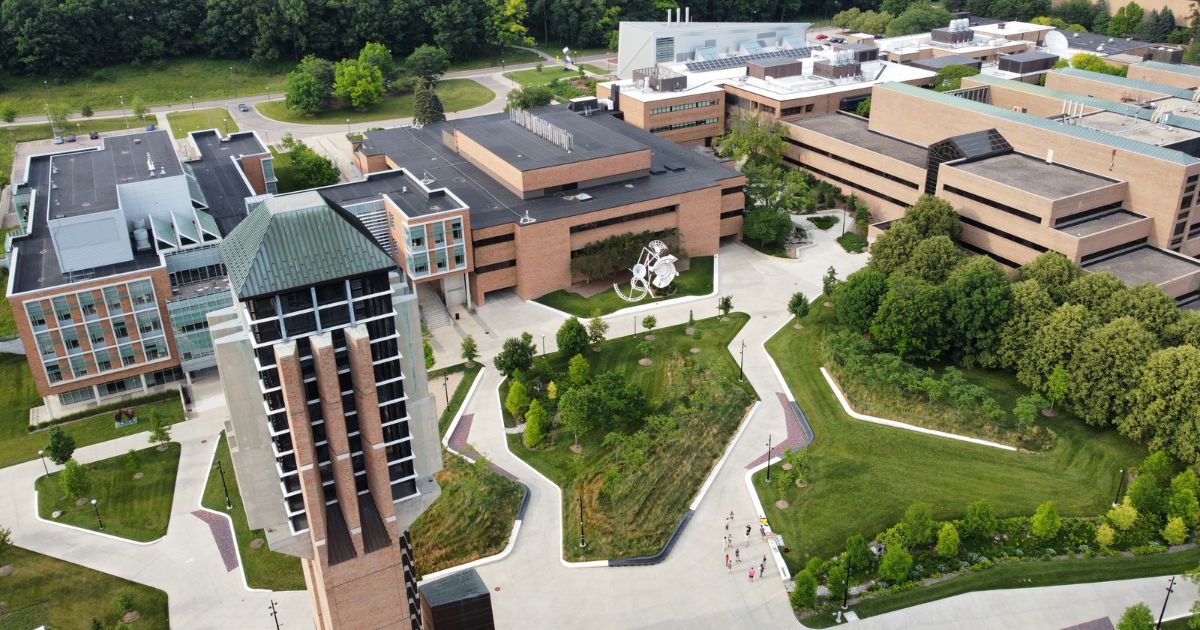This summer, researchers revealed the staggering price tag of President Joe Biden’s federal student loan forgiveness package.
According to The Hill, researchers at the University of Pennsylvania’s Wharton School of Business “found the plan would cost $605 billion over the next decade under strict assumptions, but the price tag in other conditions could grow to more than $1 trillion, a scenario the researchers said ‘requires further study.’”
But the Biden administration didn’t want to give the plan further study. In fact, the only reason it hasn’t been implemented yet is that a federal judge put a hold on it.
However, if that’s stopped your blood from boiling for having to pay for someone else’s failure to pay their student debt, perhaps the temperature of your circulation will inch back up a bit when you find out what one of the nation’s biggest and most prestigious public universities is spending money on.
An analysis by University of Michigan emeritus professor Mark Perry found his former institution is doling out $18 million annually in salary to employees involved in diversity, equity and inclusion efforts.
In a Thursday tweet, Perry published a list of the “diversicrats” salaries on Twitter. According to Daily Caller News Foundation, these were obtained through public records.
The highest paid — Tabbye Sellers, vice provost of equity and inclusion — is taking home a whopping $380,000 during the 2022-23 school year. (She’s also married to former DEI provost Robert Sellers, for what that’s worth.)
Five of the DEI employees were making over $200,000, with 44 of them making over $100,000.
@UMich now employs 142 “diversicrats” at an annual cost of $18M (total compensation) = in-state tuition for 1,075 students. Highest paid diversicrat is Tabbye Sellers @$380K+fringe benefits. Avg. = $97K and 44 make > $100K + fringe benefits. 10 years ago, UM diversicrats<20. pic.twitter.com/xU1PISR8Br
— Mark J. Perry (@Mark_J_Perry) January 5, 2023
“In my opinion, most colleges like UM are spending way too much money on DIE efforts, and it’s incredibly wasteful because those efforts are part of advancing the new DIE religion in higher education and directly contradict the core mission of a university — to educate students, teach critical thinking and expose them to intellectual diversity — in favor of pursuing misguided goals of social justice, racial justice, and gender justice,” Perry told the DCNF.
“Those misguided and expensive DIE resources could be better spent by reducing tuition instead of feeding new layers of costly administrative bloat that end up getting passed along to students in the form of higher tuition and fees.”
Ah, if only we’d adopted the DIE acronym, as opposed to DEI, earlier in the process. Alas, diversity, equity and then inclusion it is.
Administrative costs have been one of the reasons for skyrocketing inflation. According to a 2014 study by the American Institutes for Research’s Delta Cost Project, “overarching trends show that between 2000 and 2012, the public and private nonprofit higher education workforce grew by 28 percent, more than 50 percent faster than the previous decade.”
“Growth in administrative jobs was widespread across higher education — but creating new professional positions, rather than executive and managerial positions, is what drove the increase,” the study found. “Professional positions (for example, business analysts, human resources staff, and admissions staff) grew twice as fast as executive and managerial positions at public nonresearch institutions between 2000 and 2012, and outpaced enrollment growth.”
At the University of Michigan, Perry says DEI hirings have “metastasized like a cancer.”
In the past five years, the UM DEI staff has expanded by 53 percent, according to Perry’s analysis. Going back 20 years and looking at the DEI staff growth would be statistically impossible, since not a single staff member had the words “diversity,” “equity” or “inclusion” in their job title in 2003.
The DEI staff didn’t hit triple digits until the 2021-2022 school year — which, just coincidentally, happened to be the first year after our national “reckoning” with all things DEI-centric following the death of George Floyd in police custody.
And, for all of you Ohio State people smugly assuming that this would never happen at your institution, do note that Perry previously released an analysis finding things were no better in Buckeye land:
Just out today: @OhioState has a small army of 132 “diversicrats” at an avg. salary of $77,000 and total est. payroll cost of $13.4M, which would cover in-state tuition for 1,120 students https://t.co/C80vP05kvJ @jennsmola @CollegeFix @FreemanWSJ @stevenfhayward @charliekirk11 pic.twitter.com/piuXgBy4Rv
— Mark J. Perry (@Mark_J_Perry) December 6, 2021
To be fair, this 2021-22 analysis found that the highest-paid employee only made $289,000 and that the estimated DEI payroll cost was $13.4 million — enough for in-state tuition for 1,120 students.
And keep in mind, this is just the money being flushed down the toilet for DEI salaries. It doesn’t cover money wasted on other DEI initiatives, or on individuals and initiatives which are DEI-adjacent but don’t necessarily show up here.
Want to know why student debt is so high? There are other reasons for the bloat, but unnecessary and superfluous staff hires is certainly one of them. All of these people, in one way or another, contributed to taking taxpayer dollars via the wokeness grift.
The sooner people in Michigan (and Ohio and everywhere else, for that matter) ditch them, the better. Taxpayers — whether it be at the state or federal level — shouldn’t be on the hook for this kind of reckless spending on leftist indoctrination.
This article appeared originally on The Western Journal.
























